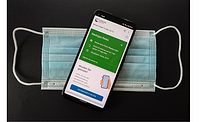Contact-tracing applications are being used to leverage the widespread global penetration of smartphone devices in controlling infectious disease outbreaks. According to latest research study by Future Market Insights, the market is set to grow at 15% CAGR through 2030. The study also projected substantial scope of increasing applications in disease control even after the conclusion of the ongoing covid-19 pandemic.
The coronavirus outbreak which emerged out of China in late 2019, has been the primary driver for the development, deployment, and adoption of contact-tracing applications. Favorable government initiatives towards social distancing and patient tracking has also positively influenced the industry. Innovations in terms of GPS, Bluetooth and ultrasonic technologies is improving growth prospects for the industry.
App developers are pushing for the development of decentralized data collection approaches via device-based databases to keep up with strong demand for data privacy standards.
Contact-tracing applications initially found use during the Ebola outbreak in the Congo. The application was developed by Global Outbreak Alert and Response Network in collaboration with WHO. Contact-tracing applications can either be run on centralized or decentralized platforms, for smartphones using iOS or Android operating systems. These programs make use of Bluetooth or GPS technologies to track potential patients, and their proximity to other users. However, developers are still challenged by issues of misinformation, cybersecurity and data privacy.






